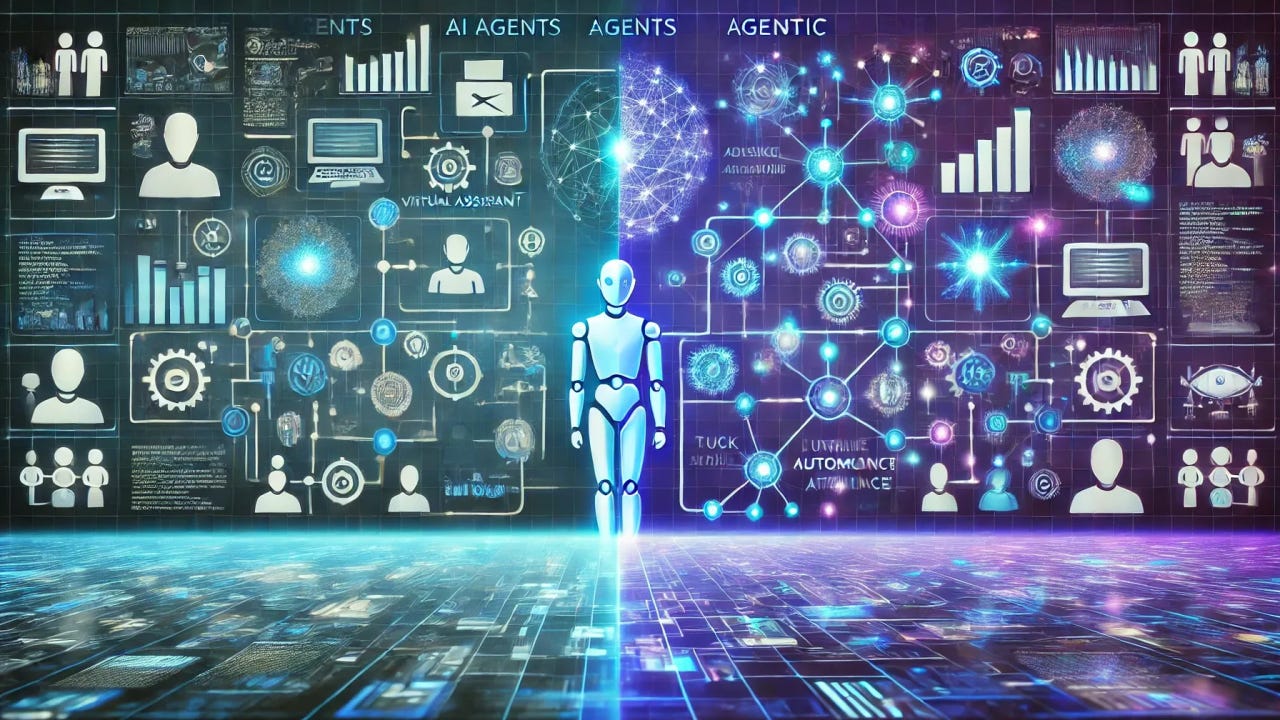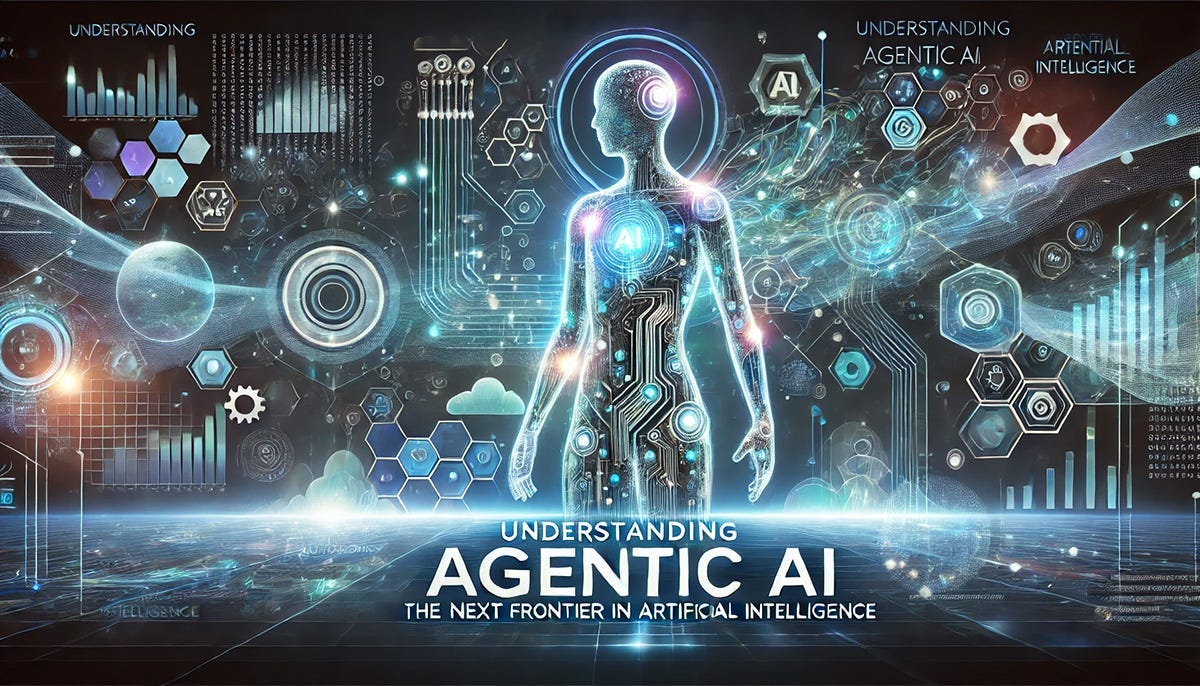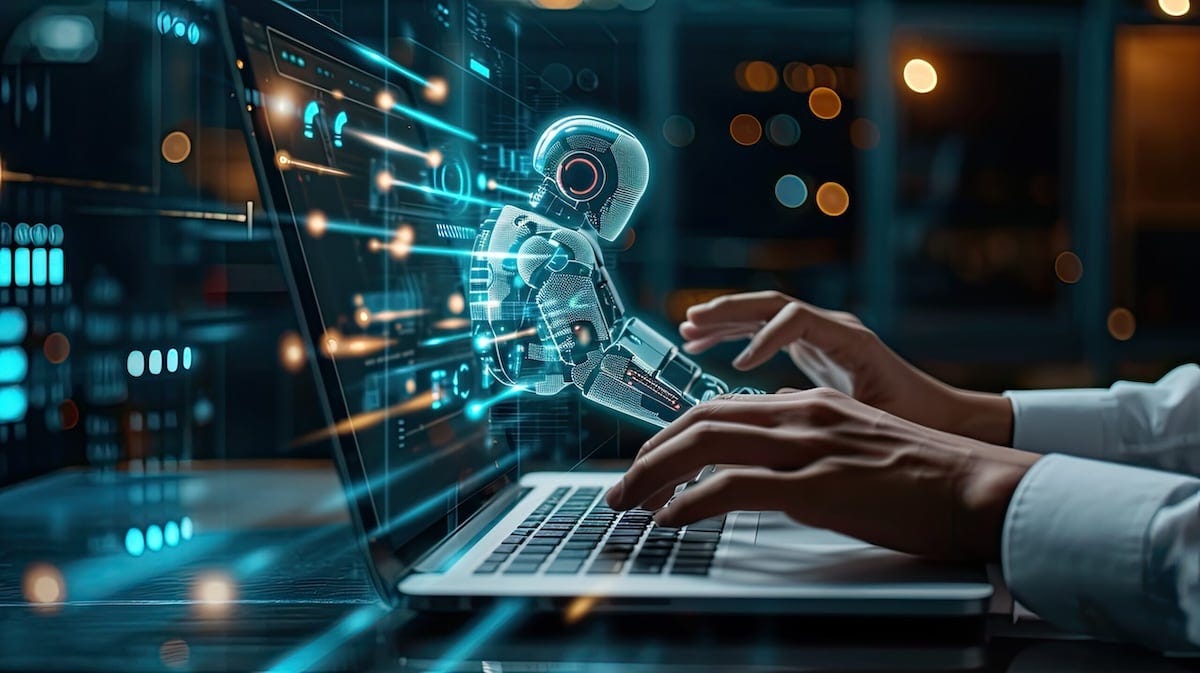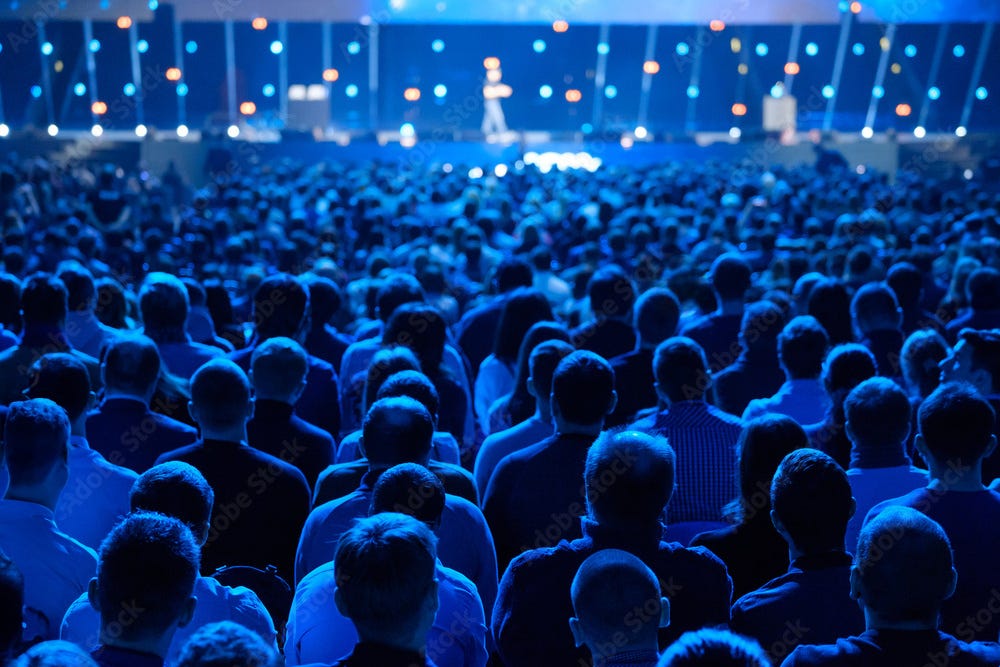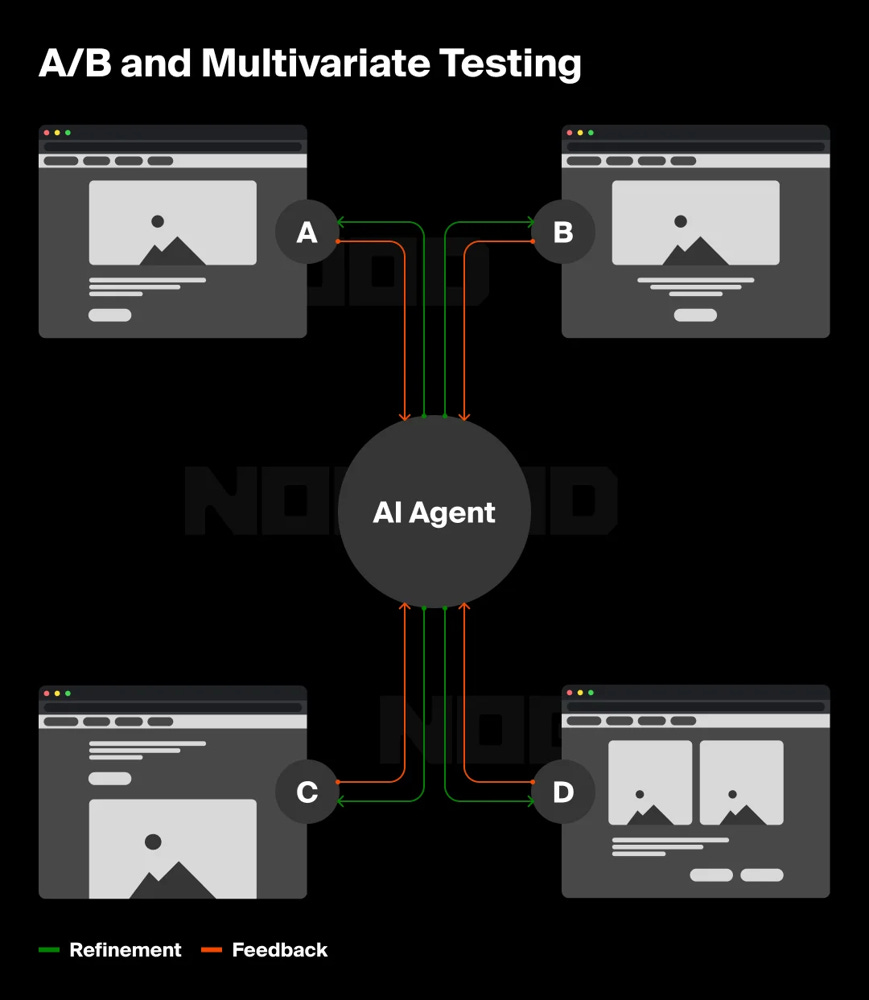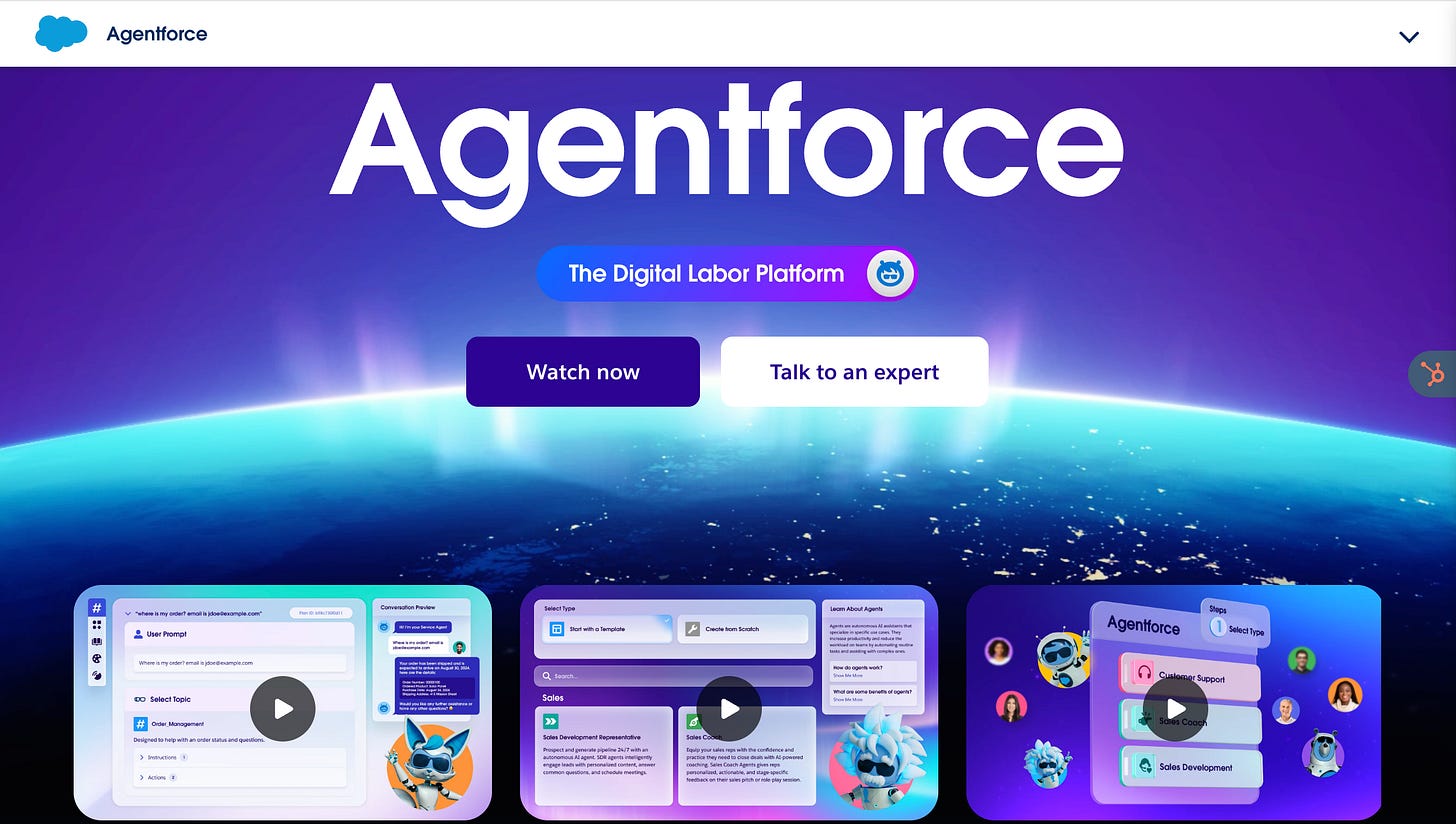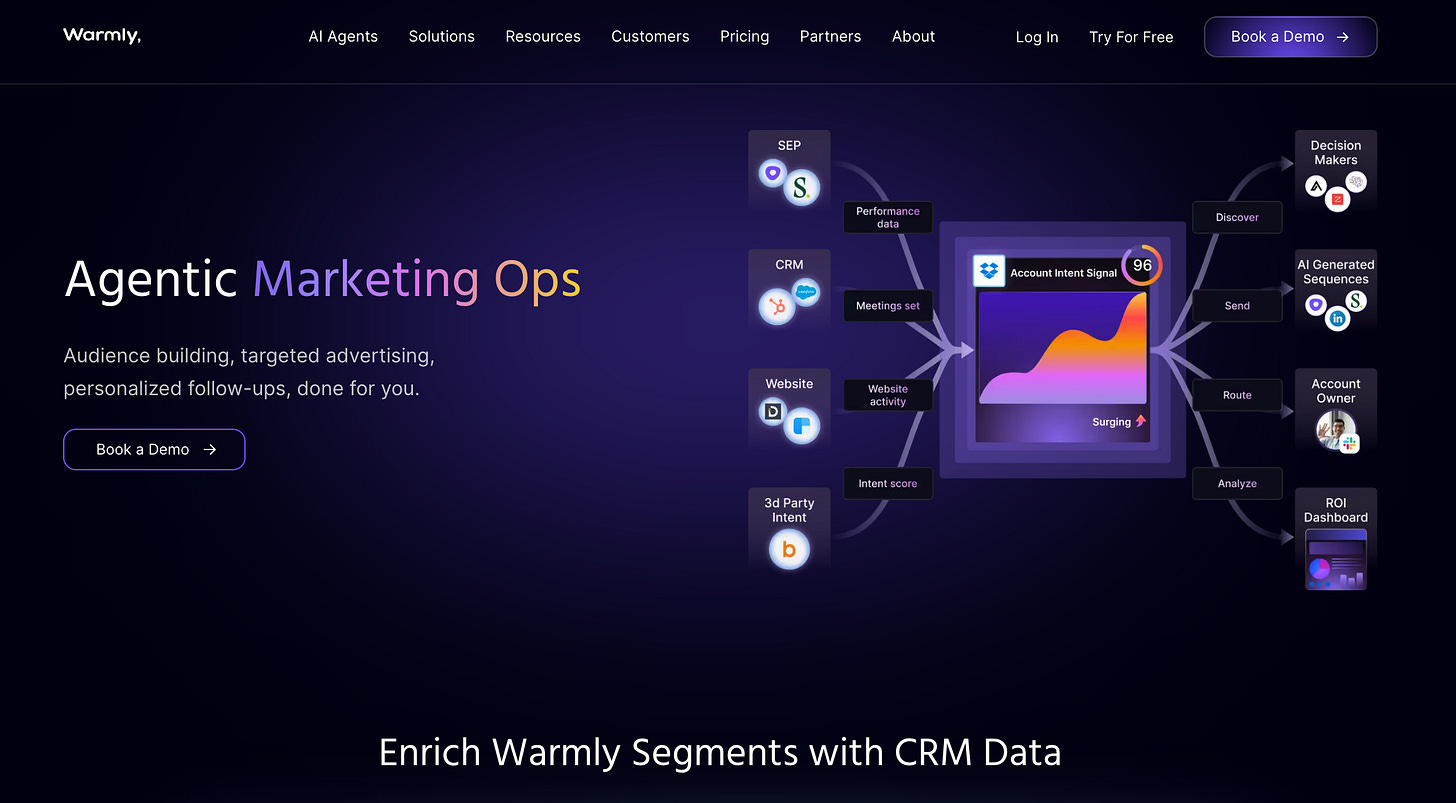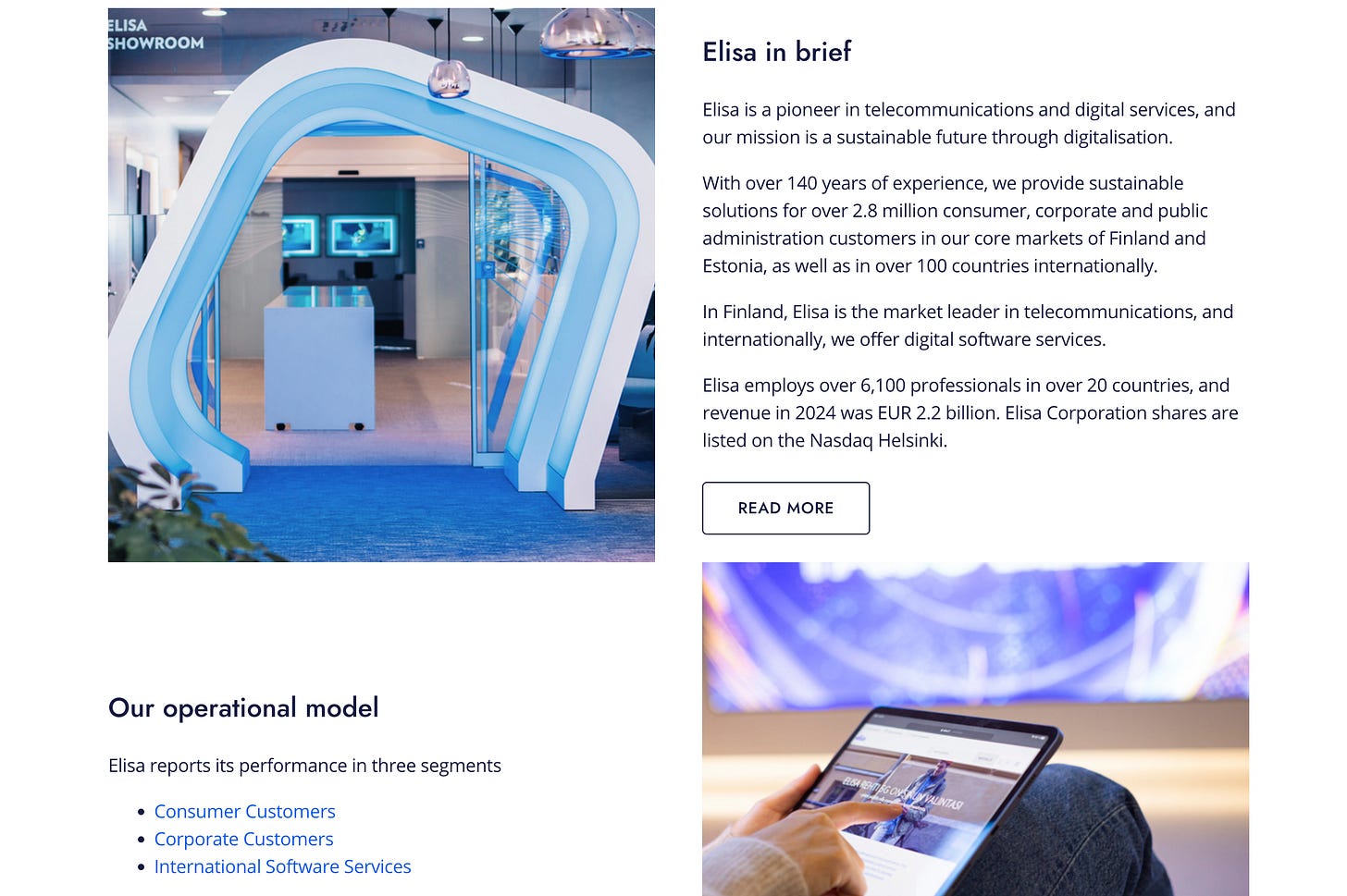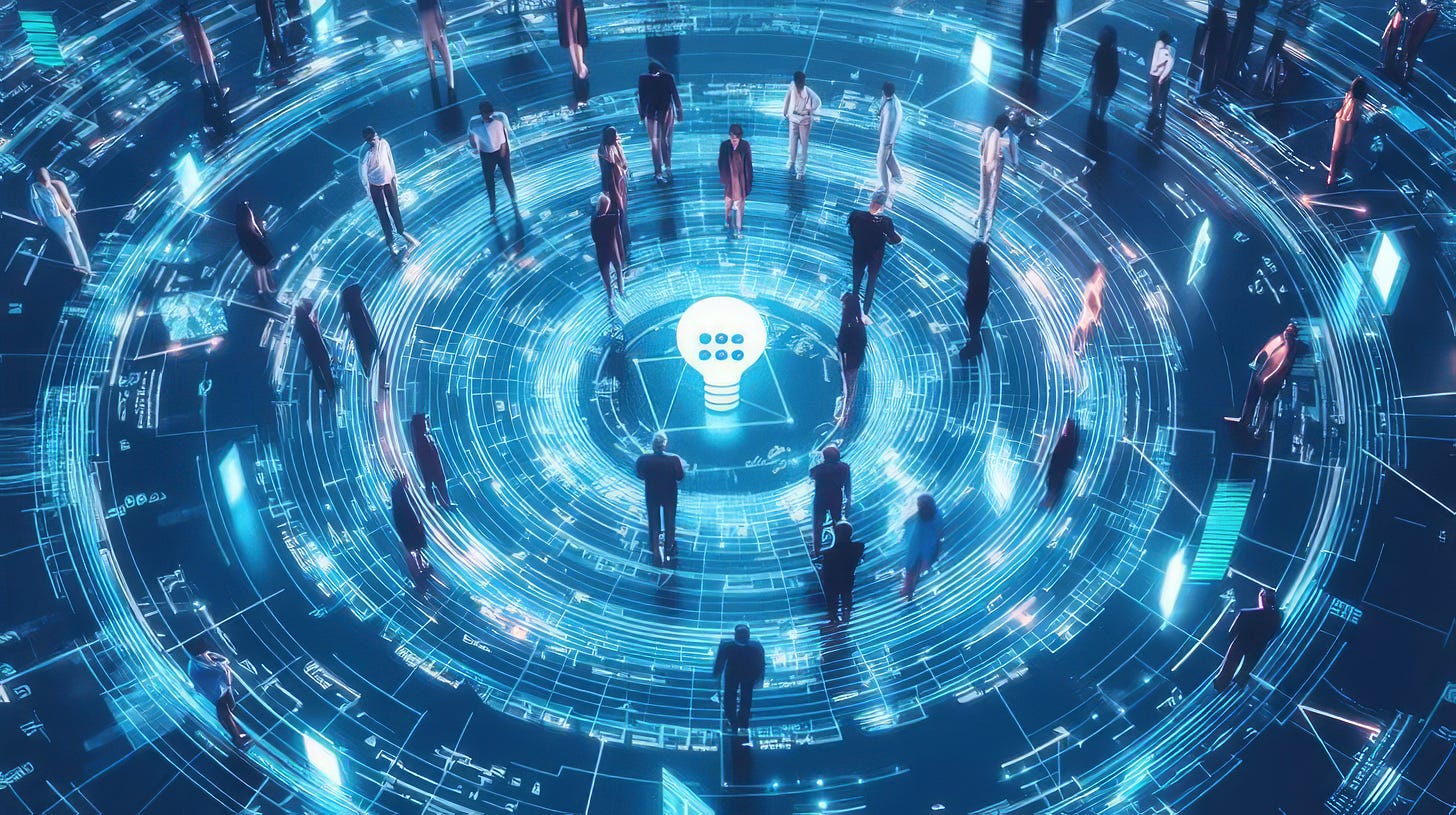Imagine a tireless digital assistant handling all your marketing work… as the final embers of human creativity slowly fade to black. Soon, empty offices will stand as tombstones to our relevance while algorithms churn endlessly, never questioning, never dreaming—only consuming and producing until our final spark is extinguished.
By then, it will be too late.
This is the “reality” of agentic automation in advertising. In simple terms, agentic automation refers to AI “agents” that can supposedly make decisions and take actions independently, without needing step-by-step human instructions. How convenient. These agents use “advanced AI” (including large language models and other oh-so-smart algorithms) to analyze data, understand goals, and execute tasks autonomously.
Because clearly, computers are just brilliant at understanding the nuances of human emotion and cultural context. For professionals in the advertising business, this technology “promises” to handle the busywork and let human teams focus on big-picture strategy and creativity—you know, right until it decides those are tasks it can handle better too. But I’m sure your creative director position is totally safe.
The ascent of agentic automation is not merely reshaping roles and strategies in the advertising industry—it is dismantling them. This technological upheaval threatens to render traditional creative roles obsolete, replacing human ingenuity with algorithmic efficiency.
Ah, the age-old question: What’s the difference between AI Agents and Agentic AI?
Let’s discuss the distinction, shall we?
Think of AI Agents as your eager-to-please digital interns. They handle specific tasks like scheduling meetings or sorting emails, all based on predefined rules. Efficient? Sure. Autonomous? Not quite. They’re the calculators of the AI world—useful, but not exactly groundbreaking.
Now, Agentic AI is where things get interesting. These systems perceive their environment, make decisions, and adapt to new situations—all without human intervention. It’s like giving your AI a brain and a will of its own. Imagine a self-driving car that not only navigates traffic but also decides to take a detour to pick up your dry cleaning.
While Agentic AI promises efficiency and innovation, it also introduces challenges. Autonomous decision-making can lead to unintended consequences, especially if ethical considerations aren’t adequately addressed. The line between helpful automation and uncontrollable autonomy becomes increasingly blurred.
In essence, while AI Agents are tools that follow instructions, Agentic AI systems have the potential to redefine their own objectives. As we integrate these technologies into our lives, it’s crucial to consider not just what they can do, but also what they should do.
Agentic AI—the shimmering promise of a future where machines not only follow our commands but anticipate our every move, outpacing human thought and action. It’s not just automation; it’s the dawn of autonomous decision-making, where AI systems don’t wait for instructions—they act, adapt, and evolve on their own.
Imagine a world where traditional marketing automation, which once merely scheduled posts or adjusted bids based on set rules, is rendered obsolete. Now, agentic AI “thinks” through complex scenarios in real time, recognizing emerging trends in customer behavior and launching tailored campaigns without human intervention. It’s not just following rules; it’s creating them as it goes.
This means AI can react to events—like a sudden spike in website traffic or a competitor’s promotion—and take immediate action, often faster than any human team could. While this promises unparalleled efficiency, it also raises concerns about the diminishing role of human oversight in decision-making processes.
It’s a brave new world, and we’re all part of the experiment.
It’s the next evolution of AI in marketing, ushering in a golden age where campaigns are not just responsive, personalized, and efficient, but practically psychic. Because who wouldn’t want their every online move anticipated and catered to by an algorithm?
Agentic automation is the latest buzzword in marketing. It’s not just about scheduling posts or adjusting bids anymore; now, AI is your “true collaborator,” making real-time decisions to optimize your campaigns.
Imagine campaigns that practically run themselves, delivering better ROI and more engaging ads, all under the watchful eye of AI. Because who needs human insight when your AI can do it all?
So, for advertisers, embracing agentic automation isn’t just about staying ahead of the curve; it’s about letting AI take the wheel while you sit back and enjoy the ride.
One of the biggest changes agentic automation brings is in day-to-day workflows. Tasks that used to take days or weeks of human effort can be compressed into hours or even minutes.
Consider the process of launching a new ad campaign. It typically involves:
-
Researching the audience;
-
Creating content;
-
Setting up targeting; and then
-
Monitoring and adjusting once live.
What’s the deal with agentic automation?
One of the biggest changes agentic automation brings is in day-to-day workflows. Remember when launching an ad campaign was a whole production?
You had to:
-
Research the audience,
-
Create content,
-
Set up targeting, and then
-
Monitor and adjust once it was live.
It was like planning a wedding—without the cake.
Now, with agentic automation, tasks that used to take days or weeks of human effort can be compressed into hours or even minutes. It’s like having a marketing team that doesn’t sleep, doesn’t eat, and doesn’t complain about deadlines.
Agentic AI can handle many of these steps end-to-end. It can:
-
Draft ad copy and design variations;
-
Set up the campaign across channels; and
-
Start monitoring performance immediately.
In fact, modern AI agents can plan, launch, and optimize campaigns with minimal oversight, acting as “self-directed, always-on assistants” for marketing teams.
Campaigns that once took weeks to coordinate might now go live in a day. For example:
-
An agent could identify a new trending topic in the morning.
-
Have relevant ads targeting that trend by afternoon.
-
The workflow shifts from manual execution to AI-managed automation, with humans providing high-level direction.
Agentic automation? It’s the future of marketing, where your new best friend is an algorithm that knows your customers better than you do. Just don’t forget to say “thank you” when it boosts your ROI.
Agentic automation doesn’t just set up campaigns quickly; it makes them smarter over time.
Oh, continuous optimization—because who doesn’t want an AI that’s more attentive than your overzealous coworker who can’t stop refreshing the analytics dashboard?
Forget the old “set it and forget it” approach; now we have AI agents that monitor performance data every minute, tirelessly tweaking campaigns. It’s like having a digital helicopter parent for your marketing strategy.
-
Did one version of your ad start getting more clicks than another this morning? No need to wait for human intervention—the AI will have already redirected the budget by lunchtime. Because nothing says efficiency like an algorithm making split-second decisions based on fleeting trends.
-
Noticed a dip in customer engagement on one channel? Don’t worry; the AI has already refined the content or shifted spend to another channel in real time. It’s reassuring to know that while you’re still contemplating the issue, your AI has taken action—whether you agree with it or not.
In this brave new world of marketing, your role is to sit back and let the AI do its thing. Just hope it doesn’t develop a mind of its own and start launching campaigns for products you didn’t sell.
Campaigns that once took weeks to coordinate might now go live in a day.
One practical example is in A/B testing and multivariate testing. Traditionally, marketers would test two versions (A and B), wait for results, then manually pick a winner – a process that could take weeks.
Agentic AI can test dozens of variations simultaneously and adjust on the fly. It observes how real users respond and immediately allocates traffic to the best-performing content, without waiting for a human analyst. If variation “C” starts outperforming A and B, the agent will seamlessly shift focus to C and even spin up new variations to further improve results.
Figure: An AI agent orchestrating A/B and multivariate testing. The agent automatically refines and adjusts different ad versions (A, B, C, D) based on real-time user feedback, continuously zeroing in on the top-performing creative and strategy.
The result is an always-improving campaign. Automated campaign optimization means an AI agent can manage bids, ad placements, and even creative tweaks 24/7.
Agentic automation in advertising isn’t just theory – it’s already being deployed by forward-thinking companies and platforms.
Oh, fantastic news! Salesforce has unveiled its latest marvel: Agentforce. Because what the world truly needs are AI agents that not only manage marketing campaigns but also personalize content and execute tasks autonomously. And let’s not forget the pièce de résistance—the “Atlas” reasoning engine, designed to think and plan just like a human.
So, here’s to the future—where your role in marketing is to sit back, relax, and let Agentforce take the wheel. After all, what’s the worst that could happen when we hand over control to autonomous AI agents?
What the marketing world truly needed was yet another AI platform to revolutionize our lives. Enter Warmly, the latest in agentic automation, here to ensure that human marketers can finally retire and let the machines take over.
Imagine this: AI agents that don’t just assist but autonomously launch multi-channel campaigns across ads, emails, and more, all based on real-time buying signals.
Because who needs strategy meetings when your AI can read minds—or at least, your customers’ browsing habits?
And let’s not forget the dynamic audience segmentation. These agents adjust your target demographics on the fly, ensuring that your message reaches the right people at the right time. They even engage website visitors via AI chatbots, ready to answer questions, provide recommendations, and perhaps even offer a virtual shoulder to cry on.
But there’s more. Warmly’s AI doesn’t stop at mere engagement. It identifies high-value prospects overnight and initiates tailored outreach without any human intervention. Because nothing says “personal touch” like an algorithm-generated email.
So, here’s to the future—where your marketing campaigns run themselves, your customer interactions are handled by chatbots, and your role is to sit back, relax, and let the AI do all the work. After all, what could possibly go wrong?
So what’s the deal with agentic AI in advertising creative? We used to have creative teams—you know, people—coming up with ad campaigns. Now we’ve got platforms like Omneky where the AI is the creative director! It’s cranking out images, videos, text, all in different styles like it’s Picasso with a laptop. And get this—it even makes product photos. No camera, no crew, no awkward guy holding a salad. Just pixels.
And the AI doesn’t stop there. Noooo. It TESTS everything across social media—“Is this image good for Gen Z? Does this headline speak to tired millennials?” It’s like a marketer with 100 arms, throwing spaghetti at every wall to see what sticks—while somehow staying on-brand. How does it know?! What is a brand to a robot?!
You think that’s something? Look at Google and Meta—oh sorry, Facebook—they’ve been flirting with AI for years. Automated bidding, smart budgets, ads that rearrange themselves like a marketing Rubik’s Cube. But now? They’ve gone full autopilot.
Google’s got “Performance Max,” which sounds less like a campaign type and more like a protein powder. This thing decides everything—where your ads go, who sees them, what ad it shows them. You just hit a button and pray for conversions.
Facebook’s got “Advantage+.” Advantage plus what? A blindfold? It picks your best creative, best audience, all on its own. You don’t even get to argue! “Sorry, Dave, we went with the AI’s vibe.”
So we’re not totally hands-off yet—but let’s be honest, we’re getting there. First, the AI wrote the headlines. Now it’s buying the media. Next thing you know, it’s pitching clients and taking the credit.
What’s next? Titanium Agentic Cannes Lions?
Finally, consider the example of Finnish telecom company Elisa, which built a customer service AI agent named Annika. While not an ad campaign tool, Annika autonomously handled over 560,000 customer clients’ inquiries This showcases the power of agents in managing large-scale interactions. Translate that to advertising, and it’s easy to imagine AI agents managing millions of ad impressions and customer touchpoints autonomously.
Ah, the brave new world of advertising, where agentic automation is the latest buzzword promising to revolutionize our workflows. Gone are the days when media buyers meticulously adjusted bids throughout the day. Now, AI handles that, freeing up human talent to focus on “strategy” and “creative coordination”—because nothing says creativity like supervising algorithms.
Campaign managers? They’re evolving into AI supervisors, setting goals, defining brand guidelines, and ensuring the AI doesn’t go rogue. It’s like being a lifeguard at a pool where the swimmers are robots—you’re there just in case something short-circuits.
So, as agentic AI continues to reshape the advertising landscape, let’s all embrace our new roles as overseers of the machines. After all, what could possibly go wrong when we hand over the reins to autonomous systems?
The rise of agentic automation is reshaping roles and strategies in the ad industry.
Thanks to their trusty AI sidekicks, advertising teams can now juggle more campaigns across more channels than ever—because why hire more humans when you can just scale with robots? One analysis even predicts that by 2028, one in five marketing roles might be filled by an “AI worker.” Yep, your new coworker might not need coffee breaks but could still outperform you on ad testing.
Of course, humans won’t be totally out of the picture—we’ll be busy focusing on the important stuff: strategy, creativity, and, naturally, ethics. Because when the machines are running the day-to-day, someone has to make sure they don’t accidentally offend half the internet.
Meanwhile, campaign outcomes are getting a glow-up too. With always-on optimization and data-fueled targeting, the numbers are looking better. Personalized ads? Higher engagement. AI trimming wasteful spend and reallocating budgets in real time? Better ROI. And when a trend hits or a PR fire starts, the AI can update your messaging faster than you can say “brand-safe response.”
So yes, the robots are here. But don’t worry—they still need us… for now.
Of course, adopting agentic automation comes with considerations. Companies need to ensure they maintain brand voice and ethics in what the AI is doing. Proper guardrails are necessary so an autonomous agent doesn’t, say, overspend or target the wrong audience by mistake.
The good news is that tools are evolving to include transparency (so you can see why the AI made certain decisions) and controls to tweak the AI’s behavior.
The ascent of agentic automation is not merely reshaping roles and strategies in the advertising industry—it is dismantling them. This technological upheaval threatens to render traditional creative roles obsolete, replacing human ingenuity with algorithmic efficiency.
Consider Meta’s recent announcement: businesses can now entrust their entire advertising process to AI—providing objectives and payment details, while AI handles creative content, targeting, and performance optimization. This model sidelines ad agencies and creative professionals, raising concerns about brand safety and the lack of third-party verification.
The merger of Omnicom and Interpublic Group into a $30 billion entity underscores this shift towards data-driven strategies, potentially eliminating thousands of creative jobs. As AI continues to dominate, the advertising landscape faces a future where human creativity is supplanted by automated processes, leaving professionals to grapple with an industry transformed beyond recognition.
Sources: infillion.com, warmly.ai, accelirate.com, blogs.idc.comblogs.idc.com, nogood.io., The Verge, WSJ


